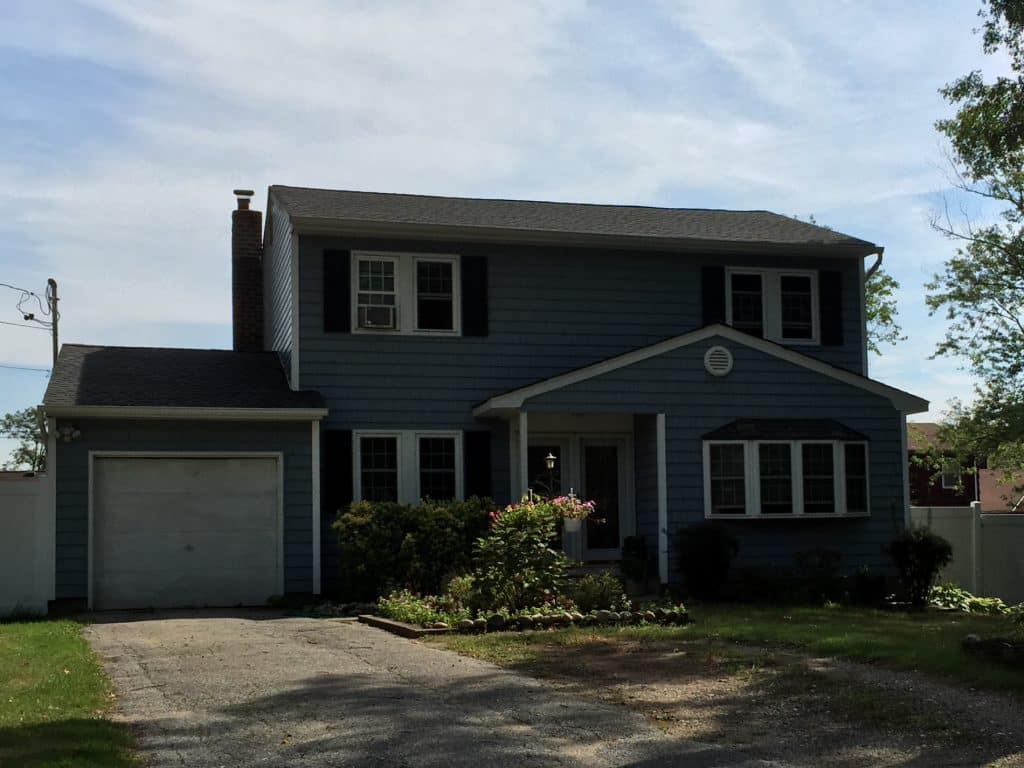Advantages of Vinyl Siding
Vinyl has become the most popular choice in siding. More than one-third of the exterior cladding installed on new and existing homes is vinyl. The balance is wood, aluminum, steel, brick or stucco.
If new siding is in your future, keep these three key considerations in mind when looking at the vinyl option:
- Vinyl siding isn’t for everyone; you have to like the way it looks on your house.
- Not all vinyl is created equal; you’ll need to learn how to pick a quality product.
- You’ll need a competent contractor. Proper installation is at least as important as product quality.

What Should I Look For in Vinyl Siding?
When considering different types of siding there are many options to choose from. One of these options is vinyl. Vinyl typically has a low-gloss finish so that it resembles painted wood. Some manufactures of vinyl even add a realistic wood grain pattern to the different pieces of vinyl. There are pros and cons when it comes to considering vinyl. one of the biggest concerns is that vinyl overtime can face and yellow. but with good quality vinyl products these concerns become very minor. When there higher quality types of vinyl are installed correctly they are very durable. This becomes particularly true if you choose insulated vinyl.
Common Concerns
In the past the most common concerns when choosing vinyl siding is that vinyl siding cannot hold its color and that is buckles and bends in the heat and can let moisture into the walls of the home. While these may have been problems in the past all of these problems have been addressed by the manufacturers of vinyl over the years. The durability of vinyl and improved remarkably over the last few years. The same can be said for the duration of color lasting on vinyl. The idea that vinyl can bend in the heat has been improved by the quality of the siding. Having professionals such as us here at Pro Home install your vinyl siding is crucial to having it last. These vast improvements over the years have made vinyl a great choice for siding. If you still aren’t sure you like vinyl, see how it looks on other houses in your area. It will soon be clear that vinyl siding may be the right choice for you.

What is the Best Vinyl Siding?
The types of siding used on homes is created by using a number of additives that make it fade resistant and protect your home from ultraviolet rays from the sun. There are also dozens of color choices. All of these high quality types of vinyl have color all the way through so that the color cannot flake off like paint can.
The texture in Vinyl siding can vary from very textured to very smooth. The textured types of vinyl typically have a realistic wood grain. These create the look that your home has stained or painted wood. These types of siding have different patterns and come in both horizontal and vertical options. The horizontal vinyl pieces are often found of traditional homes. Vertical vinyl panels can be found on more contemporary style homes.
Another aspect to consider when choosing siding is the width of the vinyl pieces. There are 8 inch vinyl panels that are very wide and smaller options that are only 3 inches wide. In the middle with 5 inch peices. more popularly there are panels that look as though multiple pieces of vinyl are together. These can be two 5 inch sections or three 3 inch sections. These panels are often accented with window trim and other accessories to bring a very esthetically pleasing look to your home.
Judging Quality Siding
Vinyl siding standards are covered by the American Society of Testing and Materials (ASTM) Standard 3679. Any vinyl siding you buy should have this designation on product fact sheets and packaging. There are different ranges in quality even when siding meet these standards. The best quality siding meets and exceeds all of the minimum standards.
To choose a type of vinyl product that will exceed the minimum standards you should consider the following.
- Vinyl should be at least .040 in. thick; .042 to .045 is better. The ASTM standard requires only .035 in.
- Soffit panels should be about .05 in. thick. Because soffits are suspended horizontally and secured at the edges only, the extra thickness prevents panels from sagging.
- Make sure the vinyl you choose has anti-weathering protection – sunlight will quickly fade raw vinyl. When looking at types of vinyl ask us questions. We can show you the top of the line products that will last on your home. These will have protection from the weather and sun. Knowing that the product you choose will resist the elements will give you peace of mind about the durability of your home.
- Always look for a warranty when choosing vinyl products. The warranty will let you know if the product you chose is weather resistant. Some of these warranty’s can be fifty years to a lifetime. Moreover, some vinyl options have transferable warranties if you sell your home. Some of these warranties will only be prorated for the new home owner. is another clue to how weather resistant a product is. Few building products come with the long warranties offered by vinyl manufacturers. Fifty years is standard. Some products even come with a lifetime warranty that can be transferred to the next owner of your home. However, some warranties are prorated.
- Always choose a reputable company like Pro Home for your vinyl installation. The durability of your siding greatly depends on having qualified professionals install it.

